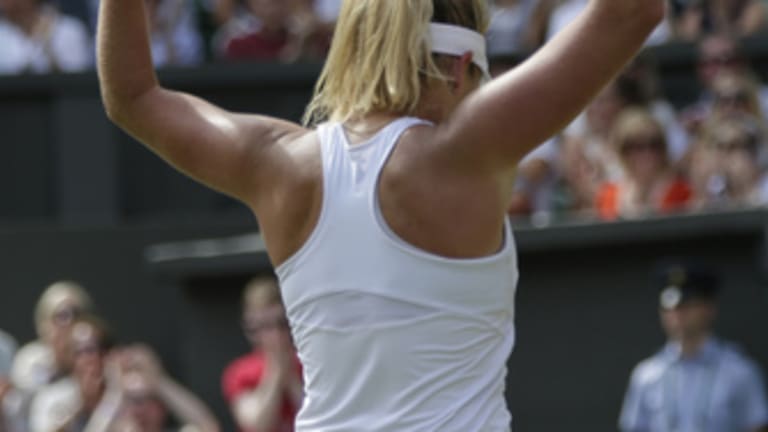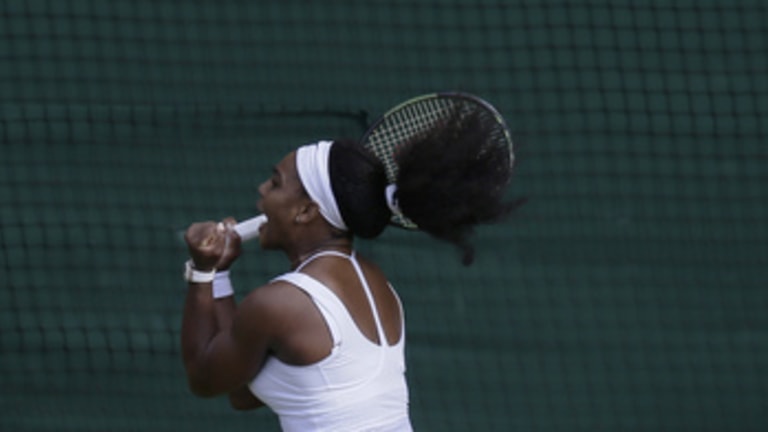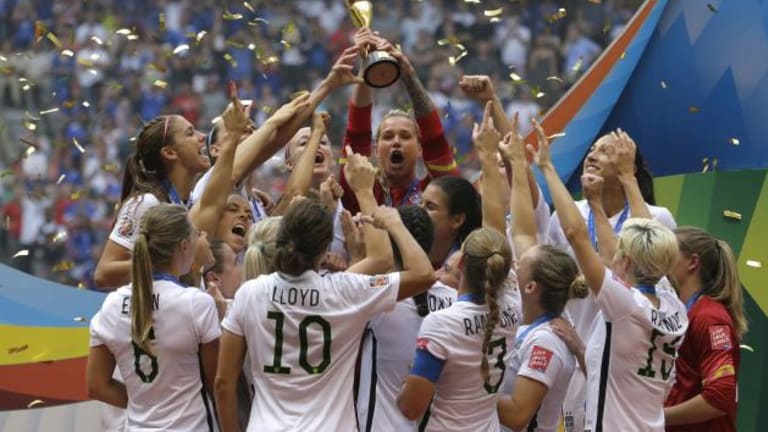Centre Court began by welcoming an enthusiastic new face. Twenty-three-year-old CoCo Vandeweghe was making her first appearance in a Grand Slam quarterfinal, but you wouldn't have known it from the way she strutted across Centre Court between points and raised the roof after winning the second-set tiebreaker. Yet Vandeweghe's moxy only made her opponent's eventual win more impressive.
That opponent was Maria Sharapova, an old hand at the Centre Court strut. But this was not the Russian at her best or most confident. Sharapova played this match the way she might carry an egg: Carefully, gingerly, one small step at a time. Her serve had a mind of its own—she double-faulted 10 times—and her forehand wandered into the alley as often as it found the corner. But when she needed to stop Vandeweghe’s momentum at the start of the third set, Sharapova found a way to start constructing points, and found her way to a quick 3-0 lead; she won 6-3, 6-7, 6-2. This time, experience had trumped enthusiasm.
As entertaining as their match was, Maria and CoCo were just the warm-up for the main event: Serena vs. Vika. This was the WTA's No. 1 facing her foremost challenger of recent years. Since 2010, only two women have beaten Williams more than once: Alizé Cornet has managed, somehow, to do it three times, and Azarenka has done it twice. This spring, Vika almost pulled it off two more times, in Madrid and Paris, but on both occasions Serena rallied from what looked like certain defeat to win.
Azarenka has slowly, in stops and starts and dribs and drabs, put her game back together after a long layoff in 2014; today she was determined to take the final step. Serena, as much as she didn’t want to hear it, began the day 10 wins from a calendar-year Grand Slam; she was equally determined not to let Vika through the door. Their head-on collision produced the match of the fortnight.
It began with Azarenka playing at full-throttle. She controlled with her backhand, finished with her forehand, and defended with both; even her serve, typically a match-losing liability against Serena, was sharp and effective. Azarenka grabbed the initiative early, and kept her grip on it through the first set.
The match also began with Vika, and eventually Serena, in full throat. The Centre Court audience tittered at the screams the two women emitted, and then gasped when they saw the shots they created. Eventually, the titters subsided, while the gasps of appreciation remained. The match, it was soon clear to everyone, was no laughing matter. Its constant stream of shrieks and fist-shakes and “Come on!”s signaled that this was tennis in its rawest, most overtly competitive—and thus truest—form, with the old-fashioned masks of politeness torn away. Williams-Azarenka may not have been an argument for grunting, exactly, but it made the strongest case I’ve seen that complaining about it is beside the point. Who would have asked, or wanted, these two women to hold anything back today?
“I think we put on a great show together, really,” Azarenka said afterward. “I really think it’s been awhile since there was that high quality of women’s tennis.”


